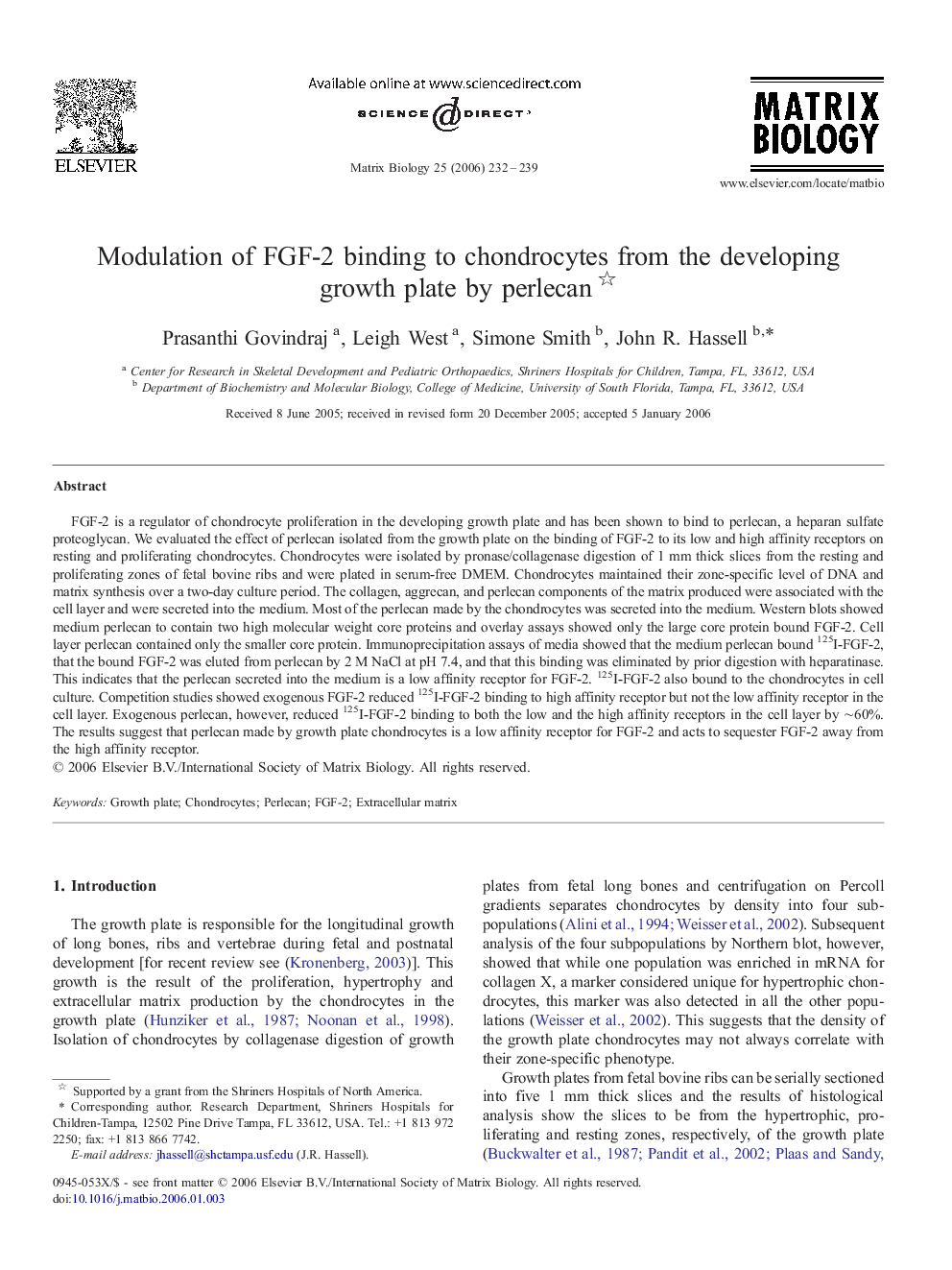| Article ID | Journal | Published Year | Pages | File Type |
|---|---|---|---|---|
| 2145517 | Matrix Biology | 2006 | 8 Pages |
FGF-2 is a regulator of chondrocyte proliferation in the developing growth plate and has been shown to bind to perlecan, a heparan sulfate proteoglycan. We evaluated the effect of perlecan isolated from the growth plate on the binding of FGF-2 to its low and high affinity receptors on resting and proliferating chondrocytes. Chondrocytes were isolated by pronase/collagenase digestion of 1 mm thick slices from the resting and proliferating zones of fetal bovine ribs and were plated in serum-free DMEM. Chondrocytes maintained their zone-specific level of DNA and matrix synthesis over a two-day culture period. The collagen, aggrecan, and perlecan components of the matrix produced were associated with the cell layer and were secreted into the medium. Most of the perlecan made by the chondrocytes was secreted into the medium. Western blots showed medium perlecan to contain two high molecular weight core proteins and overlay assays showed only the large core protein bound FGF-2. Cell layer perlecan contained only the smaller core protein. Immunoprecipitation assays of media showed that the medium perlecan bound 125I-FGF-2, that the bound FGF-2 was eluted from perlecan by 2 M NaCl at pH 7.4, and that this binding was eliminated by prior digestion with heparatinase. This indicates that the perlecan secreted into the medium is a low affinity receptor for FGF-2. 125I-FGF-2 also bound to the chondrocytes in cell culture. Competition studies showed exogenous FGF-2 reduced 125I-FGF-2 binding to high affinity receptor but not the low affinity receptor in the cell layer. Exogenous perlecan, however, reduced 125I-FGF-2 binding to both the low and the high affinity receptors in the cell layer by ∼60%. The results suggest that perlecan made by growth plate chondrocytes is a low affinity receptor for FGF-2 and acts to sequester FGF-2 away from the high affinity receptor.
